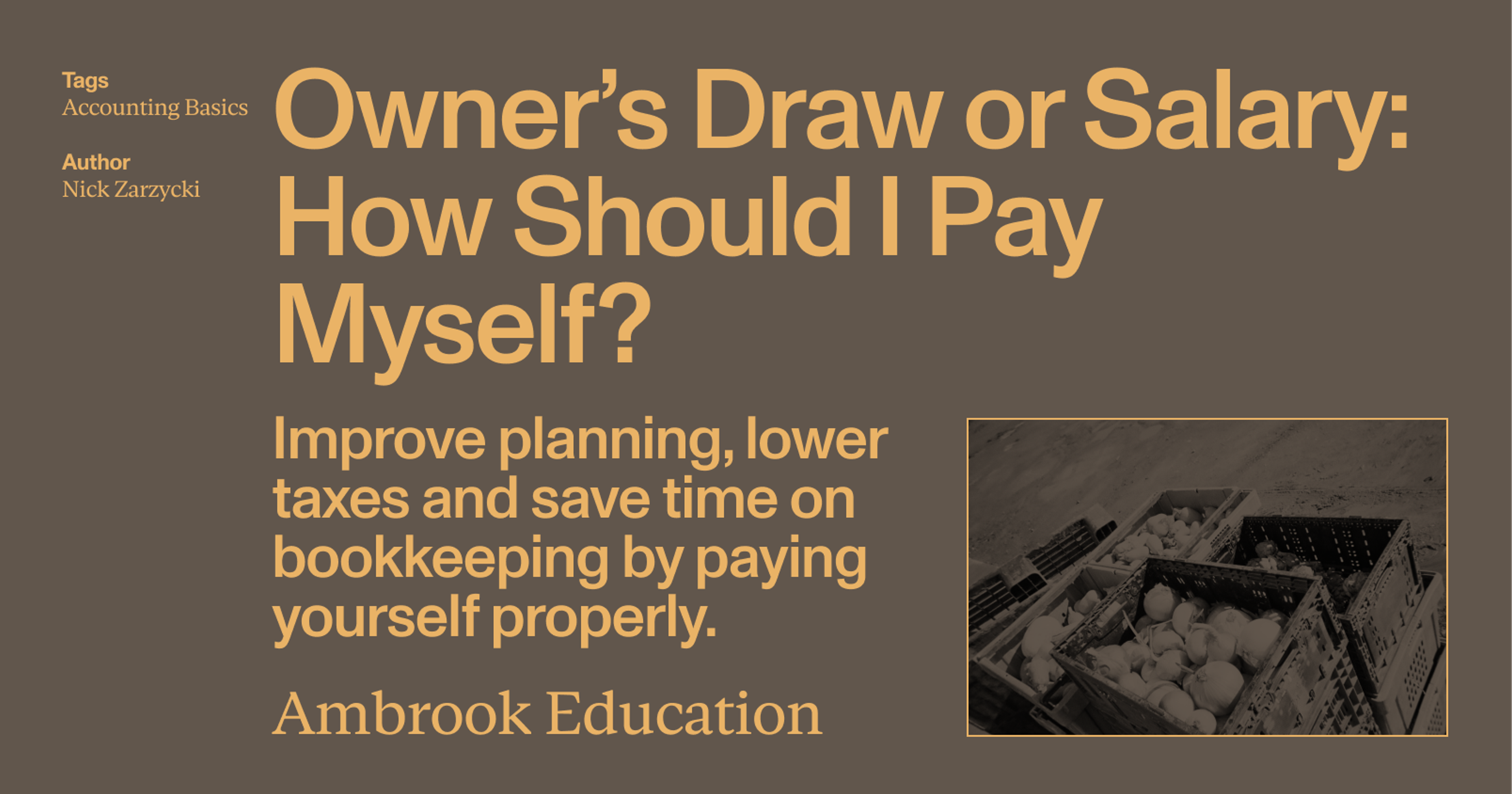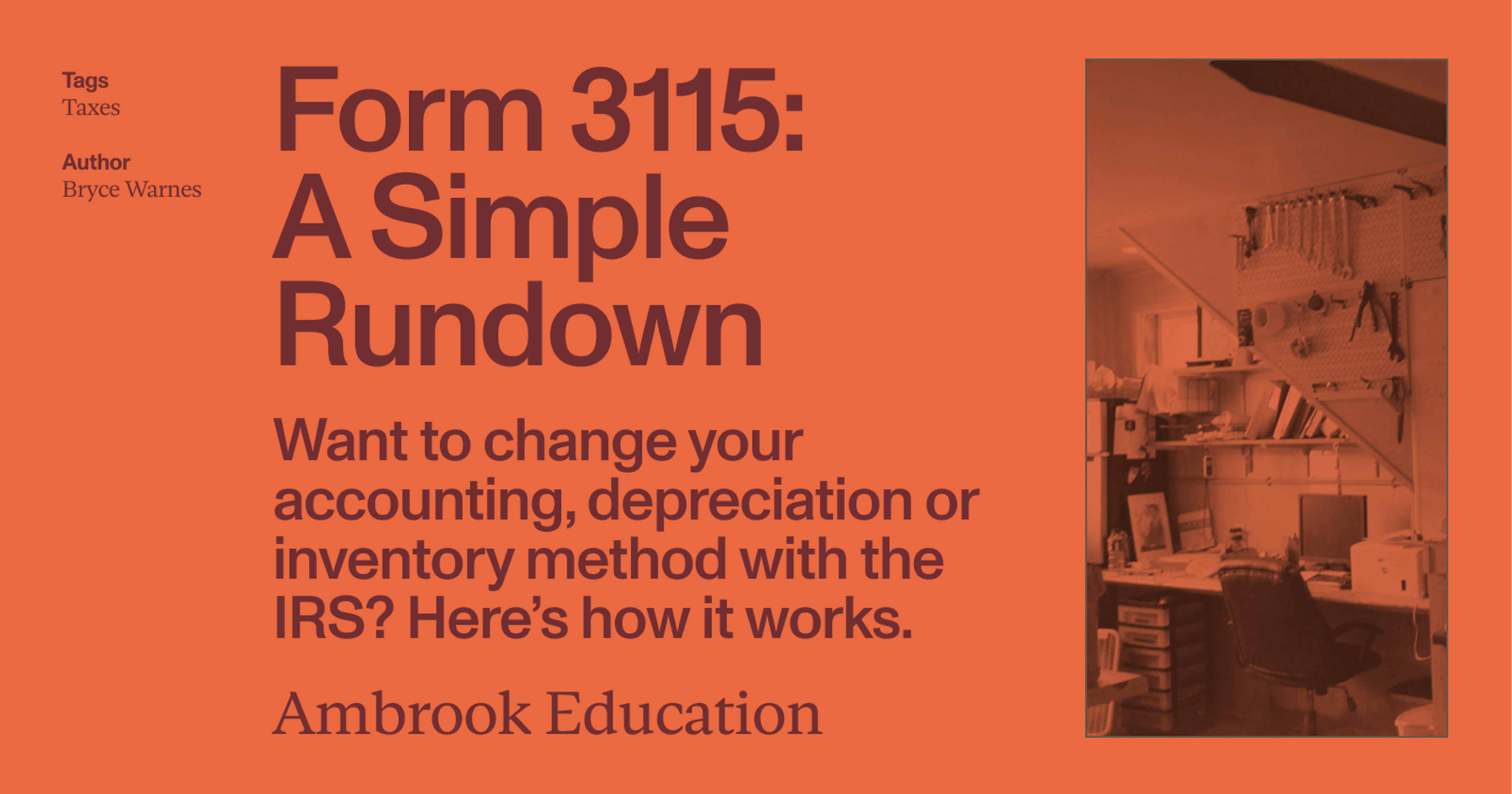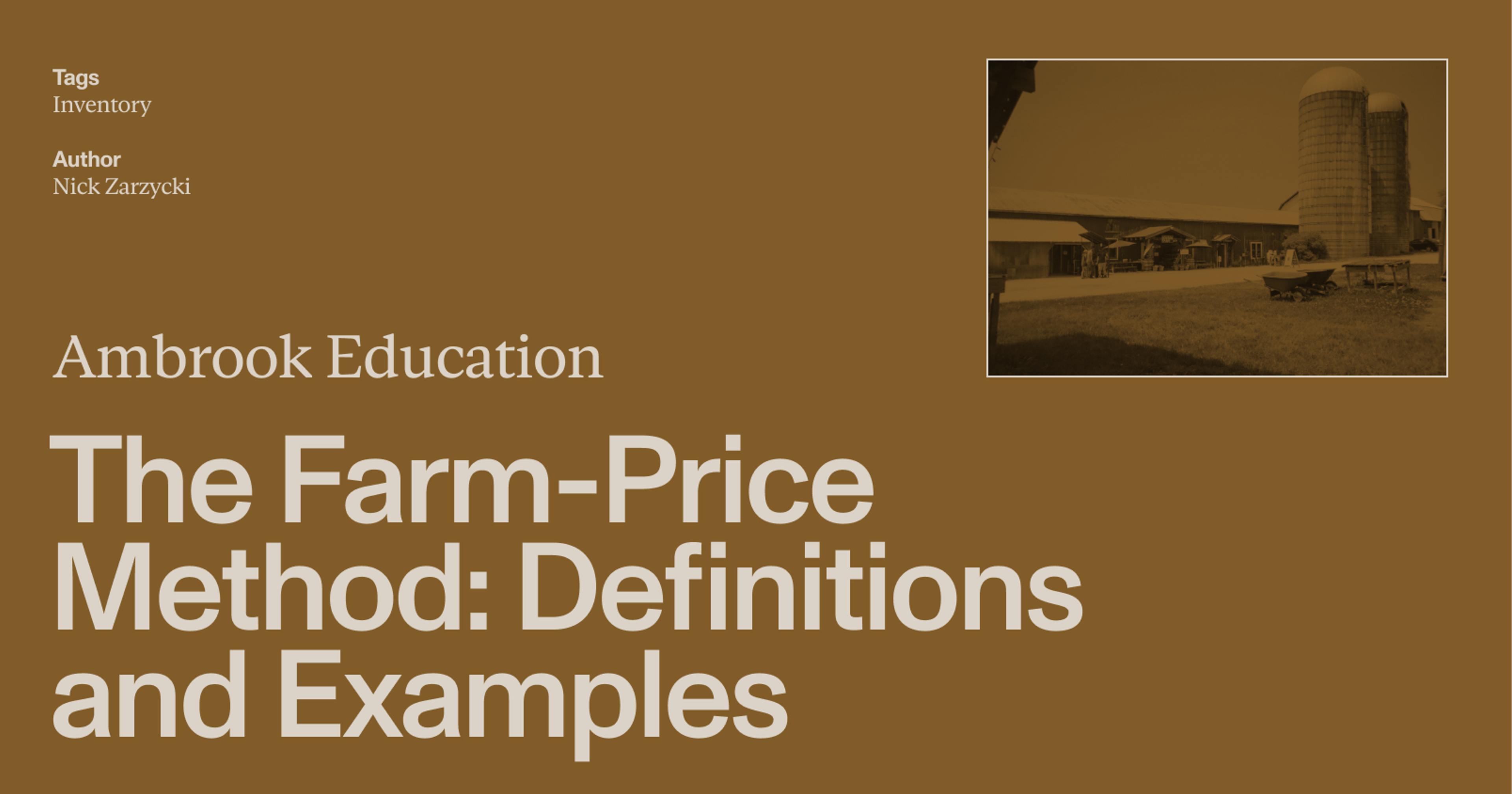Small business owners often don’t pay themselves a normal wage, but doing so could help their bottom line.
If you run a small business, drawing income directly from your business bank account and paying yourself a salary might not seem that different—at least at first glance.
But as your business grows, how you pay yourself can begin to affect your bottom line. It can change how much you pay in taxes, the amount of accounting and bookkeeping you have to do, and how much flexibility you have in your day-to-day decision making.
Here at Ambrook, we believe thinking through these issues before they start affecting your business is the way to go. Here’s what you need to know.
Option #1: Taking an owner’s draw
It’s common for small business owners to put many unpaid hours into their business and simply draw funds from the business when they need them.
Sometimes this is just easier to do from a regulatory perspective. Many American farmers structure their businesses as sole proprietorships and partnerships, and because the IRS forbids someone from being both a partner and an employee in a business, they’re not allowed to pay themselves a salary.
Instead they must pay themselves an ‘owner’s draw,’ which sounds more complicated than it is: you simply take money out of the business’ bank account at an ATM, write yourself a check, or use the business’ credit card for personal expenses.
Owner’s draw advantages:
1. More flexibility
The name of the game here is flexibility. Taking an owner’s draw lets you pay yourself whenever you need it, and you can quickly adjust how much you’re drawing depending on whether the business is doing poorly or well.
2. Simplicity
If you run a small business, the owner’s draw method also usually involves less up-front administrative overhead: there are no W-2 forms to file, no payroll taxes to deal with, and no other paperwork involved in onboarding and paying an employee.
Bookkeeping built for American ag.
Owner’s draw disadvantages:
1. It isn’t scalable
If your business ever grows or starts out with multiple partners, taking an owner’s draw can become a bit more complicated. If you own less than a majority of the business, you’ll probably have to run each owner’s draw decision by the rest of the ownership, which can become time-consuming if you don’t have a reliable system in place.
2. It requires constant vigilance
Every time you take equity out of the business, there’s less of it left over to cover your business’ short term obligations – i.e. bills and other payables. For this reason, taking an owner’s draw can require constant caution and fine-tuning.
3. There are tax disadvantages
There’s a small tax disadvantage to taking an owner’s draw: the IRS doesn’t consider it a deductible expense. While you don’t immediately have to pay taxes on it like you would a salary, taking an owner’s draw also creates a tax burden you have to deal with later in the year.
4. It distorts profitability
While not paying yourself for every hour you work might lower costs in the short run, leaving the owner’s labor expenses out of the equation fundamentally distorts how profitable your business is, which can make it difficult to plan or project your business’ performance into the future.
Option #2: Paying yourself a salary
If you structure your business as a C corporation, S corporation, or LLC, you can become an employee of that corporation and draw a regular salary, even if you’re a shareholder in the business.
You’ll file a W-2 form for yourself, withhold payroll taxes on each paycheck you receive, participate in the employee health insurance plan if you have one, and meet any other state and federal payroll requirements your business is subject to.
Salary advantages:
1. Tax benefits
Because wages are generally subject to a lower tax rate, there’s sometimes a tax advantage to paying yourself a salary. Also, because you’re taxed immediately via payroll taxes, with a salary you always know exactly where you stand, tax-wise. (As always, consult with a tax professional before making any major business decisions for tax reasons.)
2. Planning gets easier
Factoring the hours you put into your own business doesn’t just give you a better understanding of your business’ profitability. Knowing your business’ true labor costs today can save you a lot of work tomorrow – especially if you ever need to hire a replacement, or if your business expands and needs to hire more employees for similar work. While paying yourself a salary might seem like a ‘nice to have,’ it can actually decrease business risk and save you work in the long run.
Salary disadvantages:
1. More short-term administrative work
Setting up a payroll system and getting all the necessary payroll tax forms filed involves some extra work. If you don’t expect your business to grow or hire more employees any time soon, the investment in time and energy might not be worth it.
2. Slightly less flexibility
While you can change your salary, paying yourself one creates expectations, locks you into a routine and is ultimately a bit less flexible than paying yourself an owner’s draw.
Get the most out of your business with Ambrook
Accurate cash flow reporting is crucial when deciding whether to take an owner’s draw or a salary. Ambrook‘s all-in-one platform is here to help, automatically generating a statement of cash flow for your business and giving you unprecedented visibility into every dollar moving in and out.
Coupled with income and expense tracking, powerful managerial accounting tools, effortless tax time prep and other features custom-built for agribusiness, Ambrook helps you take the guesswork out of big business decisions and get peace of mind.
Want to learn more about Ambrook?






